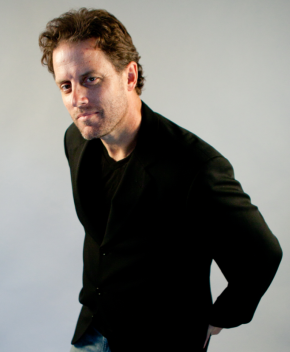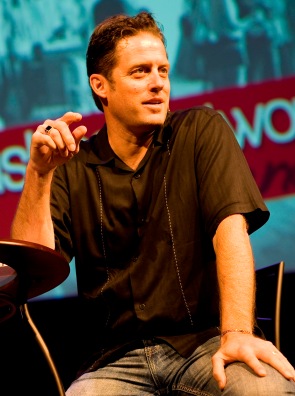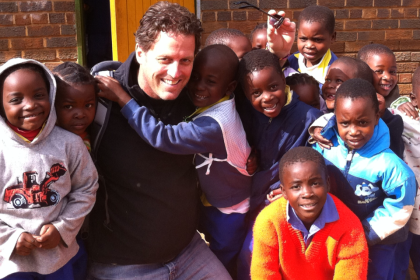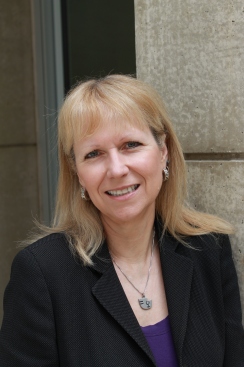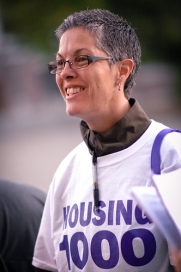Mark Walker is the Managing Director of Global Community Affairs at Applied Materials and the Chair of the Destination: Home Leadership Board. Applied Materials is working to microfinance solar power for schools in India, as well as to end homelessness in Santa Clara County.
 Q: How are you involved in ending homelessness in Silicon Valley?
Q: How are you involved in ending homelessness in Silicon Valley?
Mark: Applied Materials is one of the biggest supporters of Destination: Home, but I personally have been involved since the inception of the Housing First movement in Santa Clara County. Housing First gave us the conviction that we could be successful with a new model of ending homelessness, and creating systems change. It made it doable, and also gives us a way to quantify the problem.
Right now we’re working on measuring the cost per person of being chronically homeless, in mental health services, hospital costs, justice costs and more. We’re making progress, thanks to great cooperation from the County this year. It’s been great to see our hopes for a better, more just future coming to fruition in Housing 1000’s successes.
Q: You manage Applied Materials’ philanthropy across the entire world. Why worry about homelessness in a very affluent area of a comparatively rich nation?
Mark: We do have a global reach—Applied Materials is electrifying villages and schools in India right now. There are currently 400 million people in India who live off the grid, many of whom use unsafe and polluting kerosene fuels. We’re using microfinance techniques so that people can purchase solar home lighting systems, and we’re outfitting schools with solar power and charging stations for lamps. That way it actually strengthens school attendance too, since kids need to go to school to recharge their lamps for reading at home.
Approximately two billion people around the world live on a dollar a day. That means an enormous number of people live below the level of economic self-sufficiency. India, China, and other developing countries have vast economic inequality, with some people who are very rich and some who are extremely poor—as does America.
On a relative scale, America has the same issue of extreme poverty, with an alarming number of people living on meager incomes. Almost 25% of the population in Santa Clara County lives below the level of economic self-sufficiency—and if they have a financial problem, they don’t have an economic buffer and can easily go into crisis-mode and lose their housing. Global poverty is heart-wrenching, but people are suffering right here in Silicon Valley. Homeless men and women in America need help as badly as anyone else in the world.
Q: How do you see corporate responsibility playing out in Silicon Valley?
Mark: All companies have a role to play. Some encourage volunteerism among their employees even before they become profitable, which is just wonderful. Others use their corporate foundations for philanthropy.
There’s a tendency to isolate ourselves from the challenges faced by the homeless and the working poor. We need to be more sensitized to the issues and solutions. When I worked at United Way we created maps with green, yellow and red zones showing the areas where people of different income levels live. Often those living in the green zones—the wealthiest—don’t cross paths with those in the red zones—the lowest income areas—on their way to work. This kind of neighborhood isolation can lead to lack of understanding of how others live.
There’s this pervasive idea that everyone can bootstrap themselves to success, but realistically not everyone can. That’s one of the reasons why it’s so important for Housing 1000 to reach out and educate people. Housing 1000 is filling the gap for the most vulnerable members of our society–those who can’t succeed without our support.
Their creative approach to solving this social problem is a great fit for Silicon Valley, which is home to some of the most innovative minds in the world. It is my hope that we can leverage the innovation, creativity and global responsiveness from our business sector to increase philanthropy focused on this critical community need. And that’s my real message to all Silicon Valley professionals.
Related articles
- Interview with Frederick Ferrer, CEO of The Health Trust (housing1000.wordpress.com)
- Interview with Jon Talbert, Pastor with WestGate Church (housing1000.wordpress.com)
- Interview with Leslye Corsiglia, Director of the Housing Department of the City of San Jose (housing1000.wordpress.com)
- The Tech Awards Names N.R. Narayana Murthy Recipient of The James C. Morgan Global Humanitarian Award (sys-con.com)
- Applied Materials Reports Sales Above Expectations (inquisitr.com)








